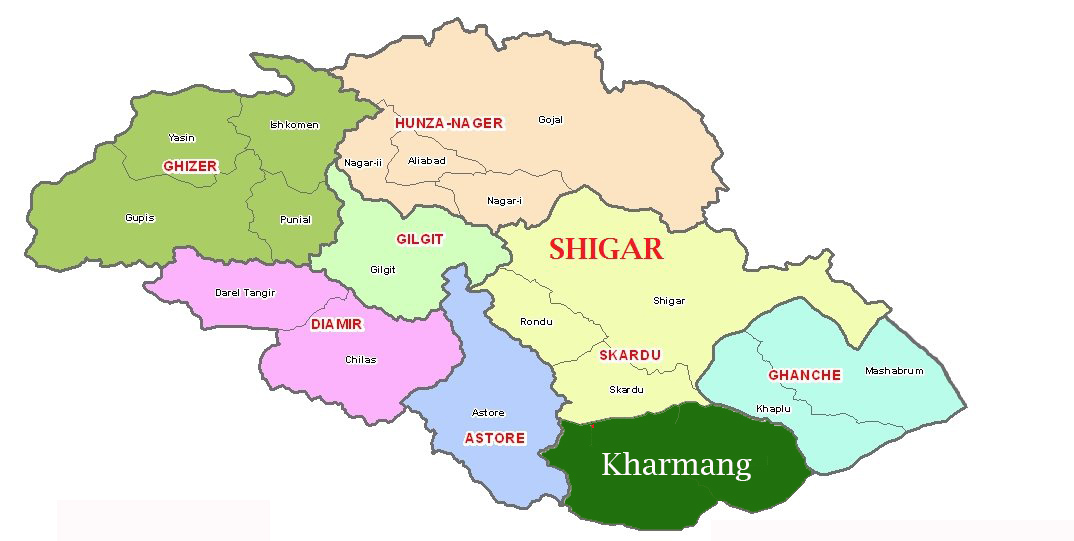MAP OF GILGIT -BALTISTAN

Gilgit-Baltistan:
GB formerly known as the Northern Areas, is the northernmost administrative territory in Pakistan. It borders Azad Kashmir to the south, the province of Khyber Pakhtunkhwa to the west, the Wakhan Corridor of Afghanistan to the north, the Xinjiang region of China, to the east and northeast, and the Indian-administered state of Jammu and Kashmir to the southeast.
Gilgit-Baltistan:
GB is part of the greater Kashmir region, which is the subject of a long-running conflict between Pakistan and India. The territory shares a border with Azad Kashmir, together with which it is referred to by the United Nationsand other international organisations as "Pakistan administered Kashmir". Gilgit-Baltistan is six times the size of Azad Kashmir.The territory also borders Indian-administered Jammu and Kashmir state to the south and is separated from it by the Line of Control, the de facto border between India and Pakistan.
The territory of present-day Gilgit-Baltistan became a separate administrative unit in 1970 under the name "Northern Areas". It was formed by the amalgamation of the former Gilgit Agency, the Baltistan district and several small former princely states, the larger of which being Hunza and Nagar. In 2009, it was granted limited autonomy and renamed to Gilgit-Baltistan via the Self-Governance Order signed by Pakistan president Asif Ali Zardari, which also aimed to empower the people of Gilgit-Baltistan. However, scholars state that the real power rests with the governor and not with chief minister or elected assembly.The population of Gilgit-Baltistan wants to be merged into Pakistan as a separate fifth province and opposes integration with Kashmir. The Pakistani government has rejected Gilgit-Baltistani calls for integration with Pakistan on the grounds that it would jeopardise its demands for the whole Kashmir issue to be resolved according to UN resolutions.
Gilgit-Baltistan covers an area of over 72,971 km² (28,174 sq mi) and is highly mountainous. It had an estimated population of 1,800,000 in 2015. Its capital city is Gilgit (population 216,760 est). Gilgit-Baltistan is home to five of the "eight-thousanders" and to more than fifty peaks above 7,000 metres (23,000 ft). Three of the world's longest glaciersoutside the polar regions are found in Gilgit-Baltistan. The main tourism activities are trekking and mountaineering, and this industry is growing in importance.

0 Comments
For more details :